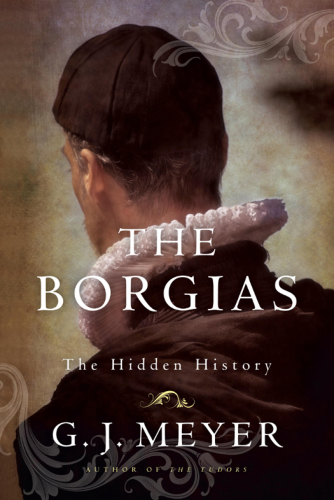
The Borgias
The Hidden History
کتاب های مرتبط
- اطلاعات
- نقد و بررسی
- دیدگاه کاربران
نقد و بررسی

February 18, 2013
To his credit, Meyer (The Tudors) is forthright about how this supposed “hidden history” of the Italian Renaissance’s most controversial family came to be: it is the product of “ year of research on both sides of the Atlantic.” Unfortunately, the shortcomings of such a limited inquiry are plainly obvious—the bibliography reveals mostly 20th-century American and British texts, a few translations, and a handful of primary sources—and his history is riddled with assumptions about the inner motivations of historical characters (“Perhaps it is in the nature of such men to be drawn by their own success into increasingly extreme positions. Certainly it was in Savonarola’s nature”). Meyer portrays Rodrigo (later Pope Alexander VI) as affable and with a “childish love for pomp”; Cesare as wild but competent, and the victim of his enemies’ slander; and, like many scholars before him, he removes Lucrezia from the role of seductress, painting her instead as a docile pawn (never mind her business acumen, building projects, and patronage). Though Meyer’s is a much better primer on the complex dynasty than the ongoing TV show The Borgias, very little of this tedious account was heretofore hidden. Family tree, timeline, maps. Agent: Judith Riven, Judith Riven Literary Agency.

April 15, 2013
Many accounts of the Borgias focus on the most scandalous stories about this powerful Italian Renaissance family whose members were statesmen, military leaders, adventurers, and popes. Meyer (The Tudors: The Complete Story of England's Most Notorious Dynasty) argues that many of these salacious tales are untrue and the result of slander. Through a logical and thoughtful examination of sources, both the standard ones and some that are less reliable, he shows that claims of corruption, poisoning, incest, and murder are untrue or greatly exaggerated. He also concludes that Rodrigo Borgia, who became Pope Alexander VI, could not be the father of Cesare and Lucrezia, but the support for this claim is weak. Meyer's chapter structure prevents the book from forming one flowing narrative. He alternates background chapters (e.g., on Italian warfare, the papacy) with biographical chapters. Readers new to the subject may find this configuration helpful, but it will likely frustrate others. Nevertheless, the results are a good introduction to the subject. VERDICT Best for general readers new to the Borgias and Italian Renaissance history, while those already knowledgeable about the Borgias may take a pass. [See Prepub Alert, 11/1/12.]--Rebekah Kati, Walden Univ. Lib., Morrisville, NC
Copyright 2013 Library Journal, LLC Used with permission.

March 15, 2013
The mention of the Borgia family often conjures up images of a ruthless drive for power via assassination, serpentine plots, and sexual debauchery. This is partially owing to propaganda spread by contemporary rivals of the Borgias, nineteenth-century Renaissance historians, and even films and television shows, including the current eponymous series on cable. Meyer doesn't avoid some of the juicy bits about the private and public lives of some of the family, but he convincingly looks past the mythology to present a more nuanced portrait of some members and their achievements. Meyer is particularly focused on the career of Rodrigo Borgia, who reigned as the much-maligned pope Alexander VI. As Meyer acknowledges, Alexander was hardly an exemplary Christian, and he could play tough in the dangerous world of Italian and European power politics. Yet he was a skilled and experienced diplomat, and he showed remarkable courage and coolness under the threat of the French invasion of Italy. Other Borgias are treated with similar evenhandedness in this well-researched and surprising study.(Reprinted with permission of Booklist, copyright 2013, American Library Association.)

























دیدگاه کاربران